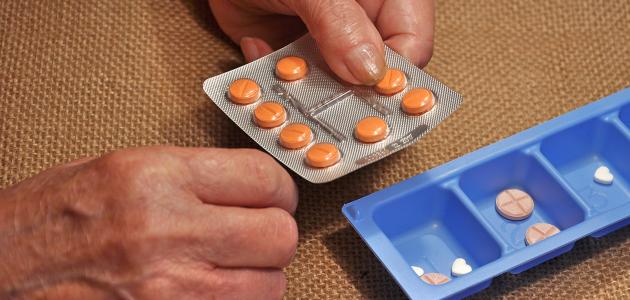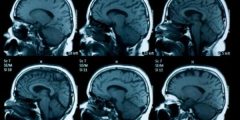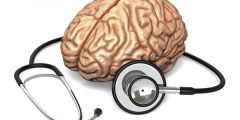Parkinson's
Parkinson's disease is known as one of the neurological disorders that occurs due to a deficiency in the production of dopamine in the brain. This decrease is attributed to gradual damage to the cells of the substantia nigra, which is located in the brain. The brain, which is responsible for producing the neurotransmitter dopamine. In fact, Parkinson’s symptoms begin to appear when the level of dopamine drops to less than 60-80% of its normal percentage in the body. It is worth noting that the number of cases of Parkinson’s disease is increasing, as the number of people with this disorder reaches In the United States there are more than 50 thousand cases annually, and based on statistics from the Centers for Disease Control and Prevention and the National Center for Health Statistics, Parkinson's disease ranks 14th among the diseases whose complications lead to death in the United States.
Parkinson's disease treatment
In fact, Parkinson's disease cannot be cured, but some different methods help reduce the severity of its symptoms. Among the therapeutic methods used, we mention the following:
drug therapy
The medications used to treat Parkinson's work to compensate for the lack of dopamine or increase its percentage in the body, which helps control the problems associated with Parkinson's disease, including disturbance of walking and movement, the occurrence of tremors, and others. Among the medications that the doctor prescribes are the following:
Read also:Treatment of left leg numbness- Carbidopa-levodopa: It is one of the most effective and widely used drugs, as levodopa enters the brain, where it is transformed into dopamine, thus compensating for the decrease in the amount of this neurotransmitter in the brain. It is helped to enter the brain by its connection to carbidopa, which prevents its conversion to dopamine outside the brain, which leads to Reducing the occurrence of side effects of using this medication, such as nausea, dizziness, and movement disorder.
- Carbidopa-levodopa (in English: Carbidopa-levodopa) Intravenous: The doctor resorts to giving this drug combination intravenously to people with advanced cases of Parkinson's disease, as the patient suffers from fluctuation in the drug level in the blood, so he is injected with carbidopa-levodopa intravenously to maintain a constant rate in the body, which helps control the symptoms of Parkinson's disease. It is worth noting that one of the problems with this procedure is that the process of installing the therapeutic tube may cause infection at the injection site.
- Dopamine agonists: These medications work like dopamine in the brain. They do not turn into dopamine, but rather cause an effect similar to the effect of dopamine. It is worth noting that these medications are dispensed simultaneously with levodopa, because their effect lasts for a longer period. In fact, this drug group causes some side effects similar to It is caused by taking carbidopa-levodopa, in addition to it may cause hallucinations, drowsiness, and compulsive behaviors. Examples of dopamine stimulants include: Pramipexole, Ropinirole, Rotigotine, and Apomorphine.
- Monoamine oxidase inhibitors: Monoamine oxidase inhibitors (MAOIs) prevent the breakdown of dopamine. It inhibits the enzyme monoamine oxidase B (in English: Monoamine oxidase B) located in the brain, which is responsible for breaking down dopamine. Examples of these drugs include Selegiline (in English: Selegiline) and Rasagiline (in English: Rasagiline).
- Catechol-OH-methyltransferase inhibitors: Catechol-O-methyl transferase inhibitors increase the duration of the effect of levodopa, as they work to inhibit the enzyme that breaks down dopamine. Examples of this group include: Entacapone.
- Anticholinergic drugs: This drug group is used to control the tremor that Parkinson's patients suffer from, but it causes a group of annoying side effects such as poor memory, hallucinations, constipation, dry mouth, and others, examples of which include; Benztropine and trihexyphenidyl.
- Amantadine: This treatment is used to control mild symptoms that occur in the initial stages of Parkinson's disease. It can also be used with carbidopa-levodopa to control involuntary movements resulting from the use of this drug combination. Among the side effects that this drug may cause are: Purple spots appear on the skin, ankle swelling, and hallucinations.
Read also:Diagnosis of Parkinson's disease
surgeries
The doctor may resort to deep brain stimulation (in English: deep brain stimulation) in the advanced stages of Parkinson's disease, in which the patient does not respond to the medication levodopa in a consistent and stable manner, as through this surgical procedure it is possible to reduce the occurrence of tremor, and alleviate the problem of slowness. the movement.
Lifestyle change
The doctor may create a health regimen for the patient, so that he can live with the disease and alleviate its symptoms. There are some things and procedures that a Parkinson’s patient can follow. We mention the following:
- Eat healthy food: Although there is no specific food that treats Parkinson's disease, eating healthy foods may help alleviate the symptoms of the disease, as eating foods rich in fiber and drinking sufficient amounts of water helps prevent constipation associated with Parkinson's disease.
- Exercising Practicing exercise, and following it up with a physical therapist on a regular basis, strengthens the patient’s muscles and increases the flexibility of the patient’s movement. Exercise also works to reduce depression and anxiety in the patient.
- Avoid falling: The patient is susceptible to falling easily during the final stages of the disease, as some instructions can be followed to avoid falling, such as not carrying things while walking.
- Doing daily activities: The occupational therapist helps the Parkinson's patient carry out his daily activities, such as dressing, eating, bathing, writing, and other routine daily activities.
Read also:What does limb numbness mean?
Alternative treatment
There are a group of alternative treatments that can help Parkinson's patients cope with the disease and alleviate its symptoms. These treatments include the following:
- Take supplements containing Coenzyme Q10 in high doses.
- Perform a massage to relieve muscle tension and help relax.
- Acupuncture.
- Doing yoga exercises.
- Follow the Alexander Technique, which relieves muscle tension and pain.
- Practice meditation exercises.
- Treatment by owning and raising pets.
- Art and music therapy.
Symptoms of Parkinson's disease
The symptoms of Parkinson's disease appear gradually and develop, causing difficulty in the individual performing his daily activities. The most common of these symptoms in Parkinson's patients are the following:
- Tremor (in English: Tremor); The tremor begins in the hands and arms, and may affect the feet and jaw. The tremor often affects one side of the body, and as the disease progresses, it may extend to affect the other side.
- Muscle stiffness and pain.
- Suffering from slowness and limited movement.
- Difficulty walking and maintaining body balance.
- Suffering from memory problems.
- Difficulty swallowing and increased saliva secretion.
- Increased sweating.
- Urgent need to urinate, and increased frequency of urination.
- Erectile dysfunction in males.
- Suffering from a decreased sense of smell.









